Support us
As a charity we rely on your donations to fund our free exhibitions, school activities and online resources
Empowering medical excellence, shaping healthcare futures.
The physical benefits of exercise have been known since antiquity. Medics and others have written widely on the advantages, both physical and mental, of gymnastics, acrobatics and other bodily exertions.
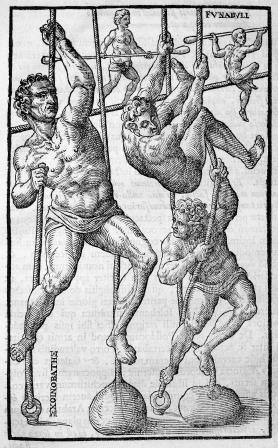
Girolamo Mercuriale, professor of medicine at Bologna and Pisa, had many medical interests and was a prolific writer. His best known work was De arte gymnastica, first published in 1569. Mercuriali was particularly interested in how specific exercises affected specific diseases. He was one of the first therapists to suggest that exercise can be helpful or harmful depending on its use, duration, and intensity. On the basis of his research, he recommends or prohibits certain physical activities, suggests proper equipment, and outlines training schedules and techniques.
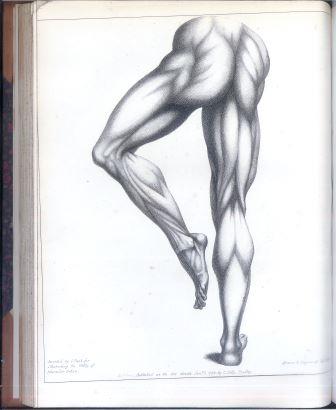
18th century anatomist John Pugh advocated the necessity and importance of exercise for a healthy body. He invented a machine to restore the strength of the muscles by exercise. This treatise includes plates that illustrate the action of different sets of muscles under tension and the grouping of muscles working with and against each other. Unfortunately, there is no illustration of the exercise machine, but it is mentioned in the testimonials at the beginning of the book.
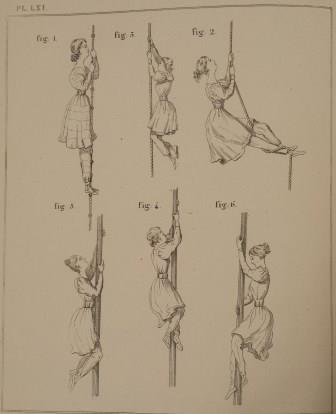
Delpech, professor of surgery at Montpellier, was one of the most important figures in the development of orthopaedics in France. He pioneered the use of gymnastics in the treatment of deformities. This engraved atlas is considered one of the greatest illustrated works on orthopaedics and exercise therapy. Delpech based it entirely on his own experience.
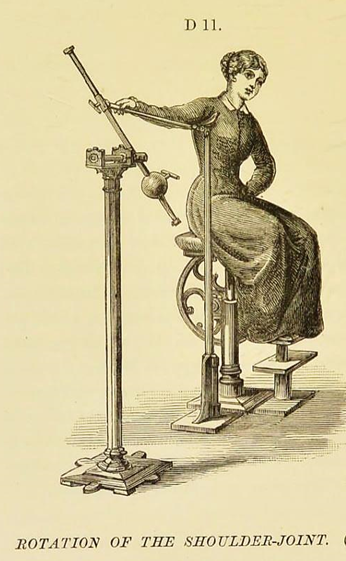
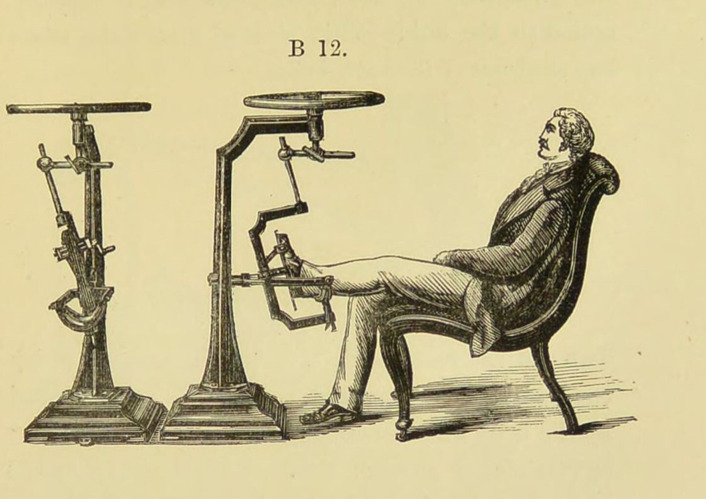
Jones Gustav Wilhelm Zander (1835-1920) was a Swedish physician who invented a therapeutic method of exercise using his custom made machines.
Each machine model targeted a specific set of muscles and provided steady, but also variable resistance which allowed gradual progression to more strenuous exercise. The design of the machines is remarkably similar to that of today’s exercise machines.
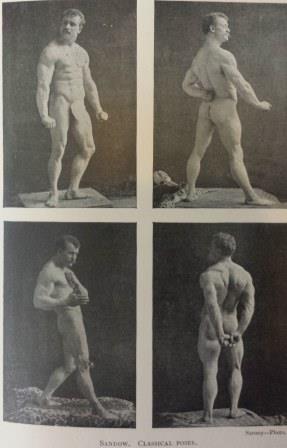
At the height of his fame Sandow was celebrated across the world for his strength and a supposedly perfect physique. He was an early example of a global celebrity – he developed the Sandow ‘brand’: he published books and pamphlets, designed and sold exercise equipment such as Sandow spring loaded dumb-bells.
On physical training is illustrated with many photographs of Sandow dressed in leopard-print underwear or a fig leaf, flexing his muscles.
Sandow performed in Edinburgh in 1892. According to contemporary press, 20,000 people came to see him and “his astounding feats have been the subject of universal comment in Edinburgh society”.
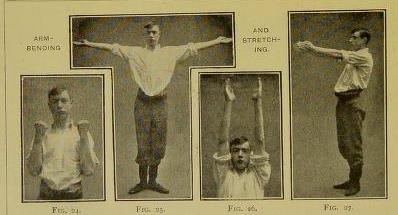
Eustace Miles, a Cambridge graduate, was an athlete, an academic, a prolific writer and a food reformer. He owned a vegetarian restaurant and a cookery school. He competed in the 1908 Olympic Games, when he won the Silver medal in the tennis singles. Miles advocated a simple, balanced, meat-free diet with protein supplements.
The Chapters in Cassell’s physical educator include:
A course for most men who are busy,
A course for people past their prime,
How to get exercise in or near cities,
Exercise to remedy obesity
A course for very little children.
You can see the full digitised volume online here.
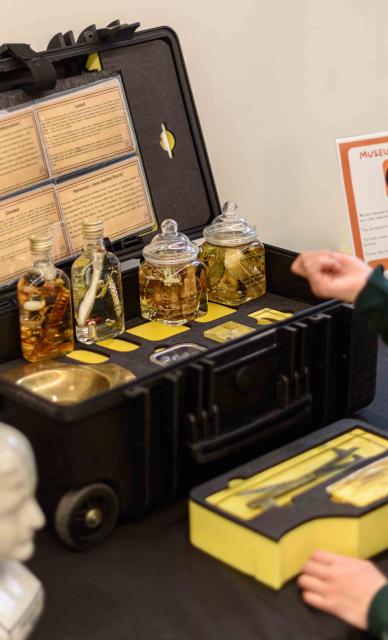
Support us
As a charity we rely on your donations to fund our free exhibitions, school activities and online resources